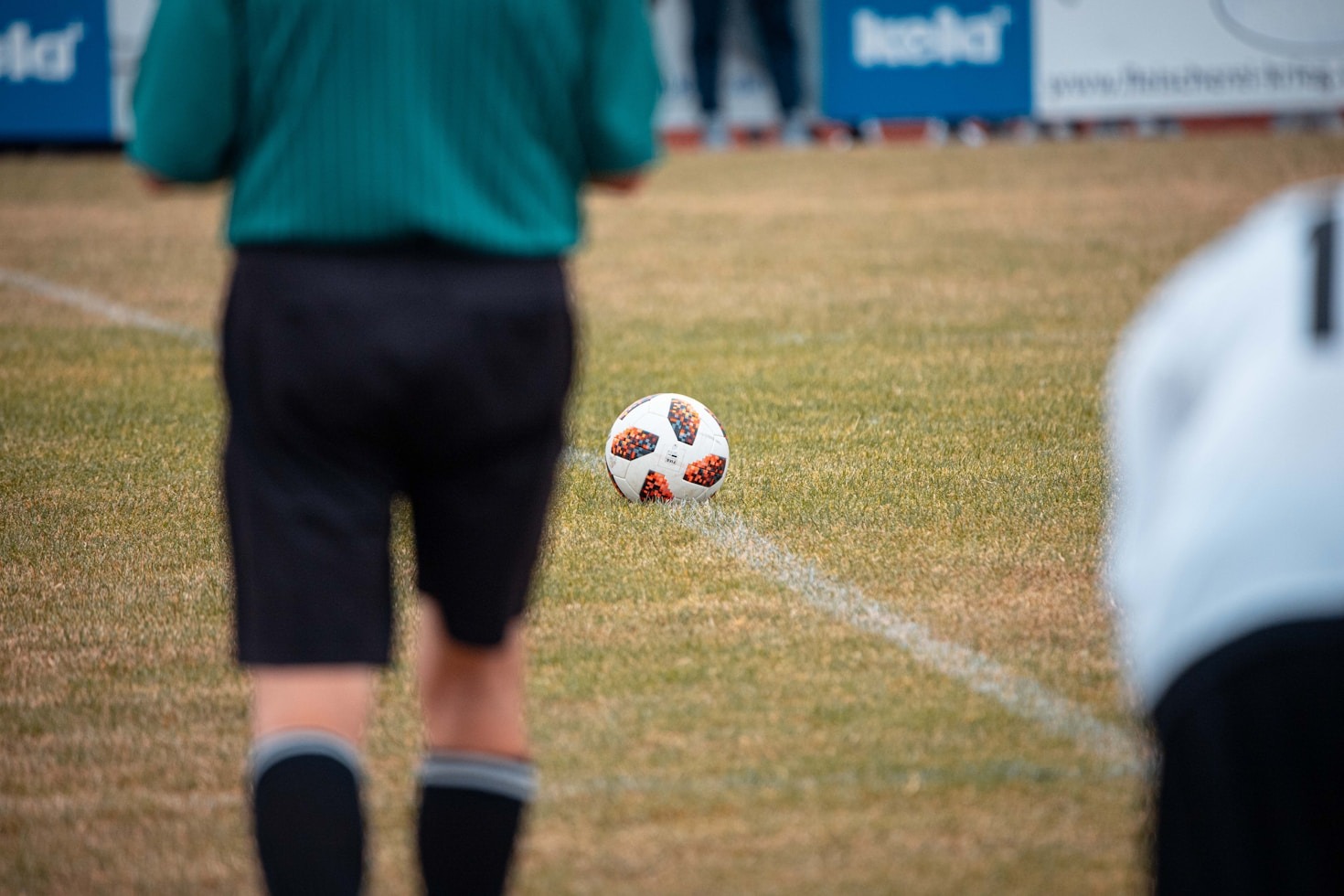

Mastering the Fundamentals: The Core of Pro Training
Professional footballers never overlook the basics. While advanced techniques and flashy moves get the spotlight, it’s the fundamental skills — passing, dribbling, shooting, and ball control — that are the backbone of every elite player’s game. Training like a pro means dedicating time daily to sharpen these core abilities.
Consistent repetition of simple drills might seem mundane, but it’s this consistency that builds muscle memory. Pro players perform basic drills at game speed, simulating real match conditions to ensure they’re match-ready at all times. It’s not just about doing them — it’s about how you do them.
Mastering the fundamentals also involves mental discipline. Many amateurs skip basics in pursuit of flair, but pros understand that even top-tier strikers like Erling Haaland still work on simple finishing techniques regularly. The fundamentals never go out of style — they win games.
Developing a Pro-Level Fitness Routine
Top-tier football demands peak physical conditioning. To train like a pro, your fitness routine must cover strength, speed, endurance, and agility. Professional players follow structured programs tailored to their position, injury history, and season schedule.
Strength training is crucial not just for muscle growth but also for injury prevention and overall resilience. Core workouts, resistance training, and bodyweight circuits all feature heavily in a pro’s routine. These exercises enhance balance, coordination, and explosive power — critical in football.
Cardiovascular endurance is also prioritized. Footballers train their aerobic and anaerobic systems through high-intensity interval training (HIIT), shuttle runs, and timed drills. These exercises mimic match-day exertion and help maintain high energy levels for 90 minutes or more.
The Importance of Recovery and Rest
While training hard is essential, recovery is just as critical. Pro footballers invest heavily in recovery techniques — from cryotherapy and massages to structured rest days. Recovery isn’t a luxury; it’s a strategic part of training that allows the body to adapt and grow stronger.
Sleep is often underrated but plays a massive role in muscle repair, cognitive function, and hormonal balance. Professional players aim for 8–10 hours of quality sleep per night and sometimes incorporate naps during the day.
Active recovery, including light stretching, foam rolling, and low-intensity activities like swimming or cycling, is often used to keep the body in motion while allowing healing. Ignoring recovery increases injury risk and reduces long-term performance.
Nutrition: Fueling Performance Like a Pro
Eating like a professional footballer means viewing food as fuel. A balanced diet packed with lean proteins, complex carbohydrates, healthy fats, and vital micronutrients is non-negotiable. What you eat determines how you train and recover.
Pre-match meals typically include energy-dense carbs for sustained fuel, while post-match meals focus on replenishing glycogen stores and aiding muscle repair with protein-rich options. Hydration also plays a pivotal role in performance and recovery.
Top footballers often work with sports nutritionists to fine-tune their intake. Supplements like omega-3s, creatine, and protein powders may also be incorporated, but always under guidance. Without proper nutrition, even the best training regimens won’t deliver top results.
Mental Training and Football Intelligence
Physical ability is only part of the game. Elite players sharpen their minds through visualization, concentration drills, and match analysis. Mental training helps improve decision-making, composure under pressure, and strategic thinking on the pitch.
Visualization is a powerful technique where players mentally rehearse moves, tactics, and outcomes. This improves confidence and reduces performance anxiety. Meditation and mindfulness are also increasingly common among pros to enhance focus and reduce stress.
Football intelligence, or “game IQ,” includes spatial awareness, reading the game, and understanding tactics. Pros often study match footage, not just of opponents but also of their own performances, to identify areas of improvement and tactical opportunities.
Building a Routine with Consistency
Consistency is the true secret behind professional success. A one-off intense session can’t compare to steady, daily commitment. Pro players stick to a structured weekly training schedule that includes physical work, skill drills, tactical learning, and rest.
Sticking to a routine helps build discipline and allows your body to adapt to regular training loads. It’s not about doing everything in one day but building habits that compound over time. This is how small daily wins turn into long-term mastery.
Even during the off-season, top players stay active. Their routines shift slightly to allow for mental rejuvenation but still include light cardio, ball work, and gym sessions. Consistency through all seasons is what separates the best from the rest.
Customizing Workouts Based on Position
Training like a pro means tailoring workouts to your specific role on the pitch. A winger’s training differs significantly from that of a central defender or goalkeeper. Position-specific training allows players to excel in their duties with precision.
Midfielders, for example, need high endurance and quick decision-making, so their training includes lots of shuttle runs, passing drills, and spatial awareness exercises. Goalkeepers, on the other hand, focus more on explosive power, reflexes, and shot-stopping drills.
Custom workouts ensure you’re not overtraining in irrelevant areas. Instead, you develop the attributes most critical to your role, enhancing team performance and individual effectiveness on the pitch.
Using Technology to Track and Improve
Modern footballers use technology extensively to monitor and enhance performance. GPS trackers, heart-rate monitors, and performance analytics apps provide data that helps players and coaches make informed training decisions.
These tools track metrics such as distance covered, sprint speeds, recovery time, and workload. By analyzing this data, training sessions can be adjusted to avoid overtraining or focus on specific areas needing improvement.
Video analysis is another powerful tool. Watching recordings of your training or matches helps you understand positioning, decision-making, and technique. Many professionals review clips with coaches to identify mistakes and plan improvements.
Embracing Tactical Awareness and Team Play
Even the best athletes can underperform if they don’t understand team dynamics. Pro footballers spend a significant amount of time in tactical sessions, learning how to operate within different formations, roles, and in-game situations.
Tactical awareness includes knowing when to press, when to fall back, and how to transition between phases of play. Teams often train in simulated match environments to improve their collective coordination and communication.
Playing for the team — not just personal glory — is a mindset drilled into pros from a young age. Training like a professional means understanding and respecting team tactics, roles, and strategy.
Injury Prevention and Body Maintenance
Pro players don’t wait for injuries to happen; they actively work to prevent them. Warm-ups, cool-downs, mobility work, and prehab exercises are integral to every training session. Ignoring these steps can shorten a player’s career.
Dynamic stretching, foam rolling, and balance training improve flexibility and joint stability, reducing the risk of common injuries like strains and sprains. Pro footballers also include single-leg and core-focused exercises for better control and balance.
Regular check-ins with physiotherapists and athletic trainers help identify early signs of strain or imbalance. Being proactive about your body ensures long-term success and consistency on the field.
Training Under Pressure: Simulating Match Conditions
Top players don’t just train in perfect conditions. They simulate match intensity, pressure, and unpredictability to mirror real-life scenarios. Training under pressure improves decision-making, reaction time, and composure.
Small-sided games, time-restricted drills, and competitive scrimmages challenge players to think quickly and adapt. Coaches often create scenarios like being a goal down with 5 minutes to go — this builds resilience and strategic awareness.
Training should reflect real challenges — including distractions, fatigue, and opposition pressure. If your sessions are too comfortable, you’re not truly preparing for game day.
Setting Goals and Tracking Progress
Pro athletes set short-term and long-term goals to stay focused and motivated. Whether it’s improving sprint time, scoring more goals, or reducing injury downtime, goals give direction to training.
Tracking your progress helps you identify what’s working and what needs tweaking. It also provides motivation when you see how far you’ve come. Pros keep training journals, use apps, or consult with performance coaches to stay accountable.
Without clear goals, it’s easy to plateau. Training like a pro means constantly striving for the next level, using data and discipline to keep pushing your limits.


Leave a Reply